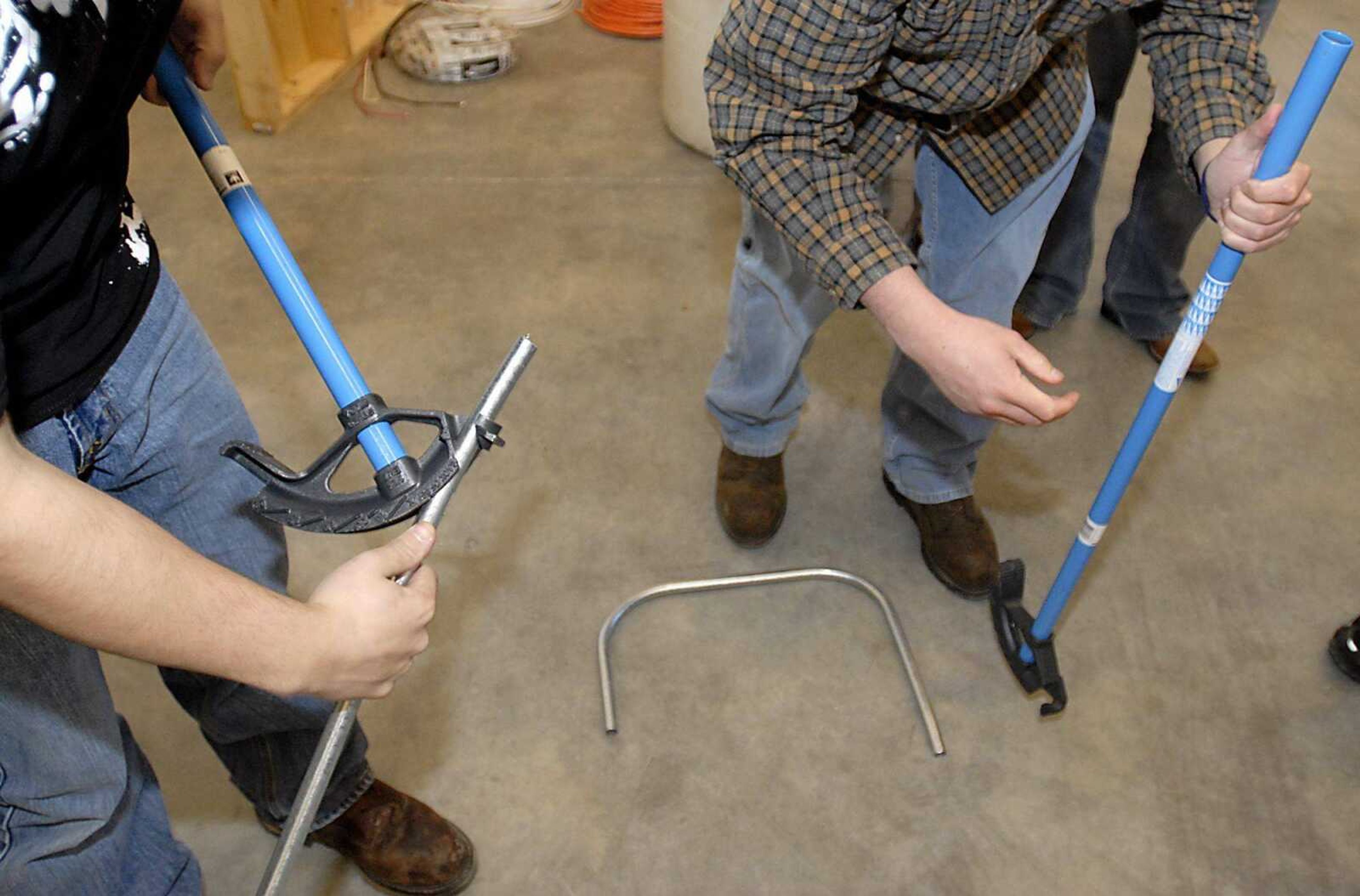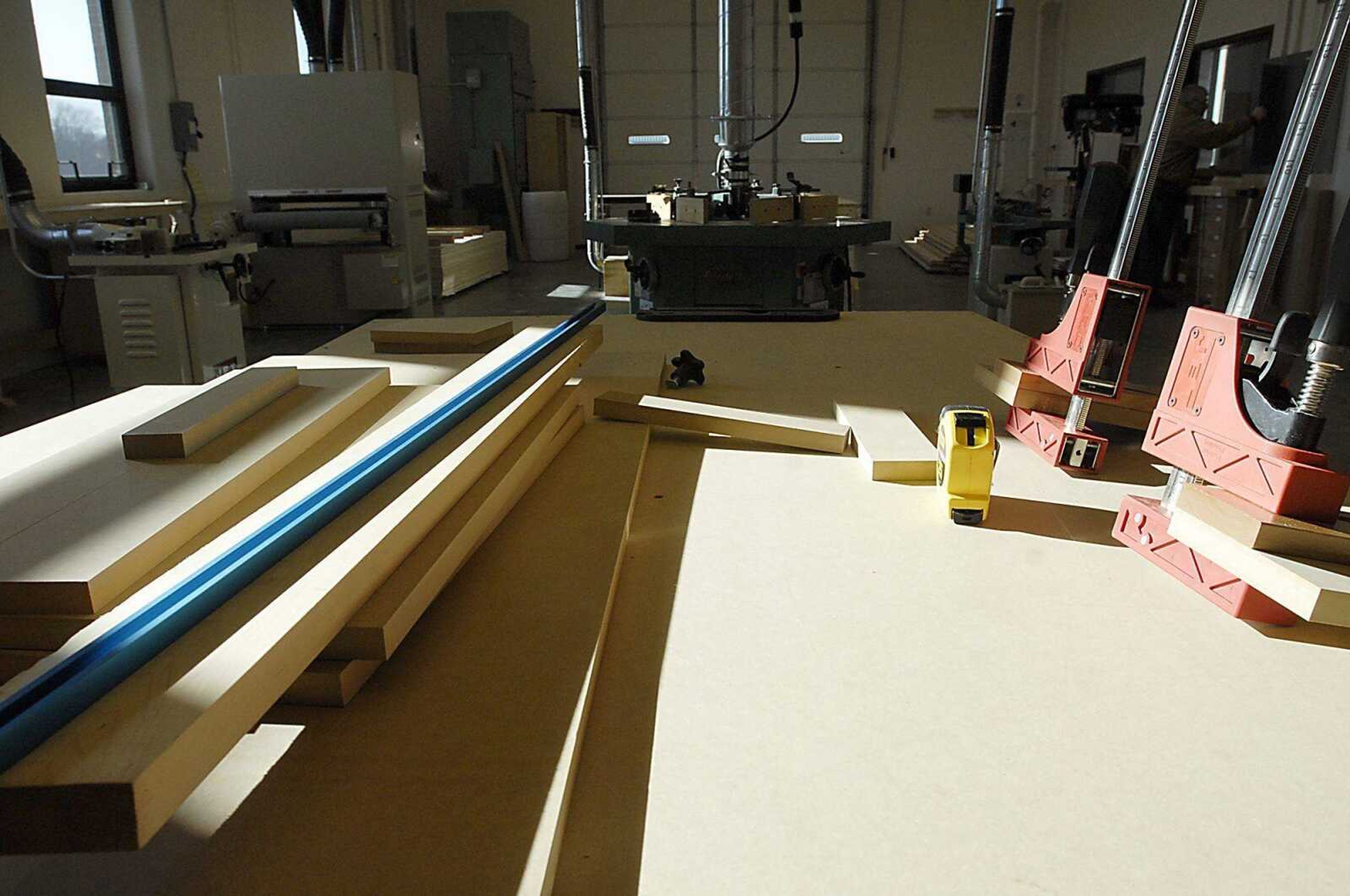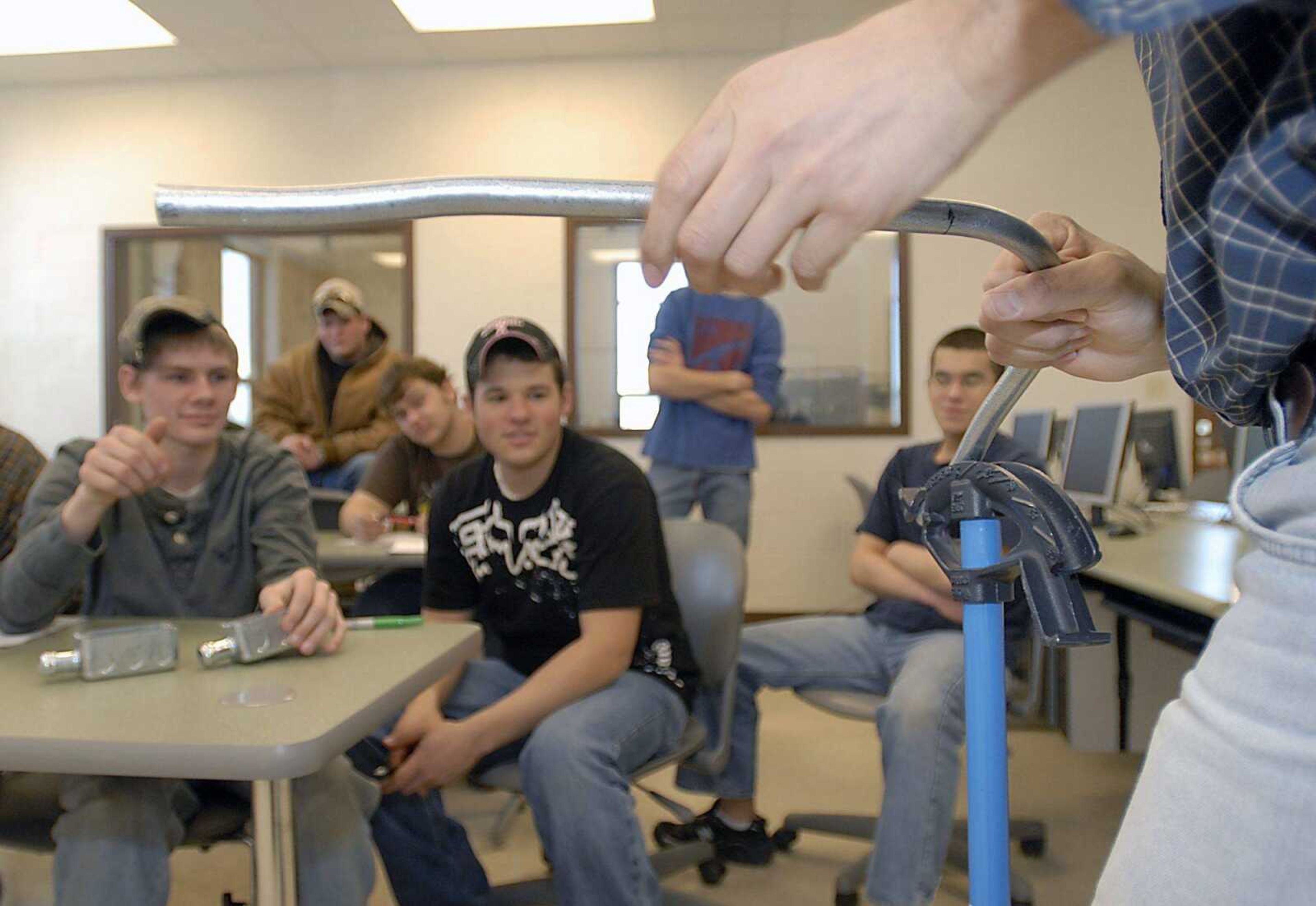Crafting skills at the Career and Technology Center
Last week, Zach Essner, a junior at Kelly High School, studied a house's blueprints. Applying what he had learned about bending conduit, he successfully wired a junction box with the help of classmates at the Career and Technology Center. "We had to mark the panel box up. It's exactly the way you would do it in a real house," he said...
Last week, Zach Essner, a junior at Kelly High School, studied a house's blueprints. Applying what he had learned about bending conduit, he successfully wired a junction box with the help of classmates at the Career and Technology Center.
"We had to mark the panel box up. It's exactly the way you would do it in a real house," he said.
With the opening of the Career and Technology Center's Annex this summer, a 12,000-foot addition that cost $1.4 million, two new programs were added. The electrical trades course, which Essner is enrolled in, is already at capacity with 30 students. A cabinet-making class has 11 students.
The annex, which is behind the Career and Technology Center, has allowed the center to grow by 126 students, to close to 650. Besides large spaces for the new programs, several classrooms and a computer lab were added as well.
"Even with the added slots, we turned away 77 adults," director Rich Payne said.
The Career and Technology Center accepts students from 10 surrounding school districts; participating schools pay tuition. Secondary students are the center's first priority, Payne said.
Juniors and seniors attend the center for half a day, then return to their home school for core subjects. Twenty-two courses are offered in everything from welding to culinary arts to auto collision technology.
Payne said the additional programs will mutually benefit students and employers.
"There are a lot of job opportunities in the region for those careers. ... The programs allow students to obtain core, fundamental, foundational skills," Payne said.

Many electrical contractors require workers to go through a four-year apprenticeship program, which requires classroom and on-the-job training. The Independent Electrical Contractors of Southeast Missouri, or IEC, run the program, using space at the Career and Technology Center.
Robin Tolbert, president of the local IEC chapter, said the new electrical trades program allows students to see if the trade is something that interests them before committing to the profession.
"We see the course as a foundation to the start of an apprenticeship program. I think it opens up the doors that the electrical trades is a good trade and lets students decide in high school if it's something they'd like to do," said Tolbert, who is also a project engineer with K&K Electric.
Students who complete the cabinet-making program, the other new course, have the skills to be hired directly out of high school, teacher Junior Eckley said.
Eckley is taking his students to W.W. Wood Products in Dudley, Mo., this week on a field trip. The company employs 800 people and has guaranteed Eckley's students an interview upon graduation, he said.
Although the housing market has slowed, Eckley said there is still a demand for cabinet makers.
"I have been in the woodworking industry myself and never have had unemployment," he said.
A third new program this year is machine tool technology, held in the Polytechnic Building at Southeast, but taught by a teacher from the Career and Technology Center.
The program is half a day and has 10 students, four of whom are adults, Payne said.
The university has a similar program, but goes more in-depth, covering materials such as plastic, while the Career and Technology Center focuses on metal.

Payne anticipates students may choose to enter Southeast's program after completing the center's course.
"All of our training programs are built around the needs of the region. Our goal is that when students leave here they can find gainful employment or move to a post-secondary institution," he said.
lbavolek@semissourian.com
335-6611, extension 123
Connect with the Southeast Missourian Newsroom:
For corrections to this story or other insights for the editor, click here. To submit a letter to the editor, click here. To learn about the Southeast Missourian’s AI Policy, click here.










